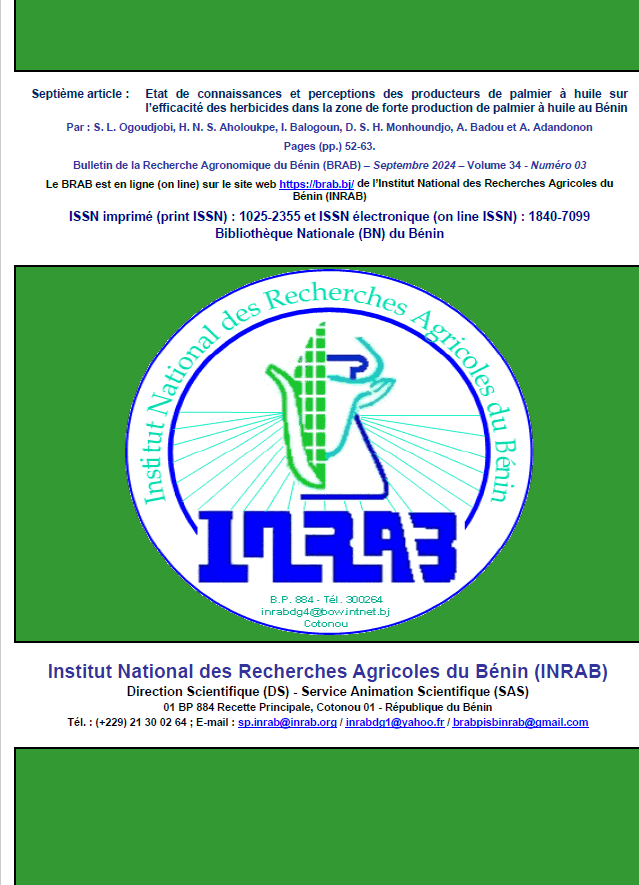Oil palm growers’ knowledge and perceptions of herbicide efficacy in the high oil palm production zone of Bénin
DOI:
https://doi.org/10.62344/brab.v34i03.219Keywords:
farmers, perception, glyphosate, macrofauna, weed control, BeninAbstract
Herbicides impact the soil-plant-environment system. This study investigated farmers' knowledge and perception of herbicide use in oil palm plantations in the Plateau Department in Southeastern Bénin. Three hundred and thirty-two producers were surveyed using Dagnelie's normal approximation method of the binomial distribution across the Plateau Department, with 55 producers in Kétou, 85 in Sakété, 81 in Ifangni, 70 in Pobè, and 41 in Adja-Ouèrè. Individual interviews were conducted with these producers to understand the herbicides used, the determinants of their use, and their impacts on the soil and oil palm. The results showed that 94.44 % of the herbicides used by the producers are not authorised by the Beninese government. The glyphosate, the paraquat, the atrazine, the nicosulfuron and 2,4-dimethylamine were the five active ingredients identified among the herbicides used by the producers. Thus 53.20% of the surveyed producers opted for glyphosate-based herbicides due to their effectiveness. The use of herbicides by producers was significantly (p < 0.05) determined by its effectiveness (28.6 %), its easy access (14.8 %), its ease of use (12.6%), its reduction in labour (9.6 %), its reduction in working time (12.6 %) and farmers’ mimicking (21.8%). According to over 70 % of the producers, the use of herbicides reduced soil fertility and lowers yields. An experimental study on the effects of herbicides, especially those based on glyphosate, on the soil, the oil palm and the quality of the produced oils is necessary to confirm or refute the producers' perceptions.

Published
Issue
Section
License
Copyright (c) 2024 Bulletin de la Recherche Agronomique du Bénin

This work is licensed under a Creative Commons Attribution-ShareAlike 4.0 International License.
Les articles publiés par le Bulletin de la Recherche Agronomique du Bénin sont en libre accès. Ils sont gratuits pour tout le monde, immédiatement téléchargeables dès la publication et distribués sous la licence CC BY-NC-ND (https://creativecommons.org/licenses/by-nc-nd/4.0/).







